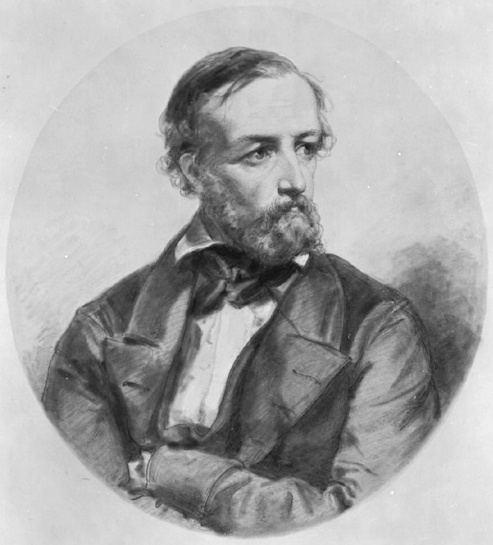<Back to Index>
- Mathematician Johann Peter Gustav Lejeune Dirichlet, 1805
- Writer Georges Joseph Christian Simenon, 1903
- Governor of Uttar Pradesh Sarojini Naidu, 1879
His family was from Richelette, a small community 5 km north east of Liège in Belgium, from which his surname "Lejeune Dirichlet" ("le jeune de Richelette", French for "the youth from Richelette") was derived.
Dirichlet was born in Düren, where his father was the postmaster. He learned from Georg Ohm at the Jesuit gymnasium in Cologne. His first paper was on Fermat's last theorem comprising a partial proof for the case n = 5, which was completed by Adrien-Marie Legendre, one of the referees. Dirichlet completed his own proof almost at the same time; later he produced a full proof for the case n = 14.
He graduated from the University of Bonn in 1827 and taught as a Privatdozent at the University of Breslau, later teaching at the University of Berlin. In 1855 Dirichlet began teaching at the University of Göttingen. In 1854, he was elected a foreign member of the Royal Swedish Academy of Sciences.
In 1831, he married Rebecca Henriette Mendelssohn Bartholdy, who came from a distinguished family of converts from Judaism to Christianity; she was a granddaughter of the philosopher Moses Mendelssohn, daughter of Abraham Mendelssohn Bartholdy and a sister of the composers Felix Mendelssohn Bartholdy and Fanny Mendelssohn.
Ferdinand Eisenstein, Leopold Kronecker, and Rudolf Lipschitz were his students. After his death, Dirichlet's lectures and other results in number theory were collected, edited and published by his friend and fellow mathematician Richard Dedekind under the title Vorlesungen über Zahlentheorie (Lectures on Number Theory).
